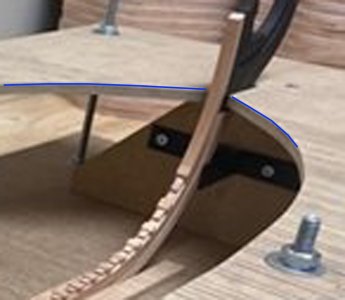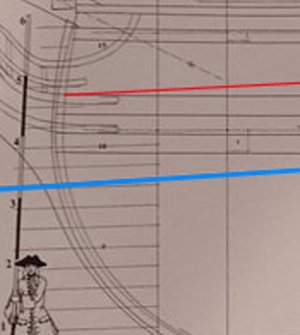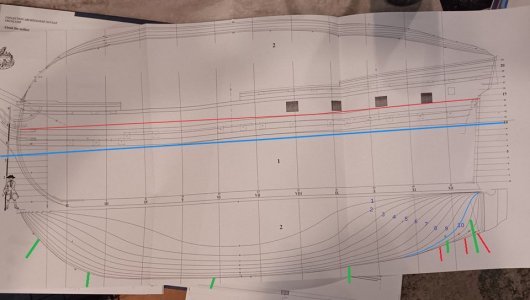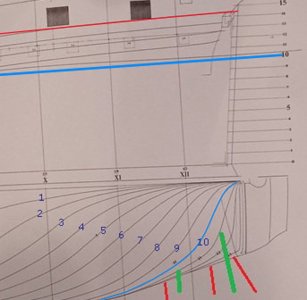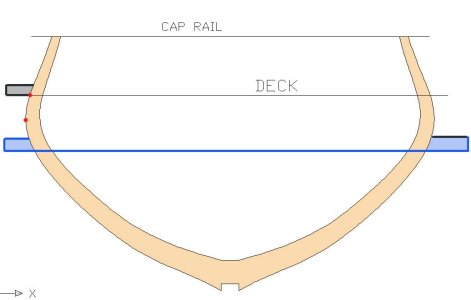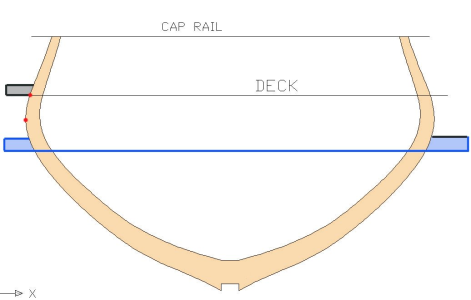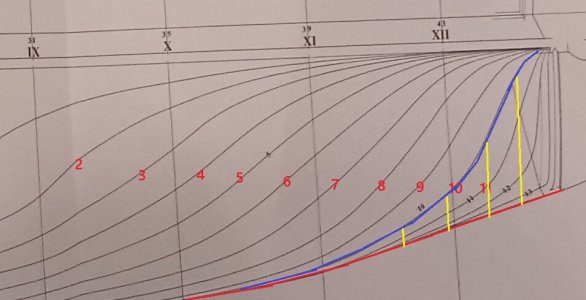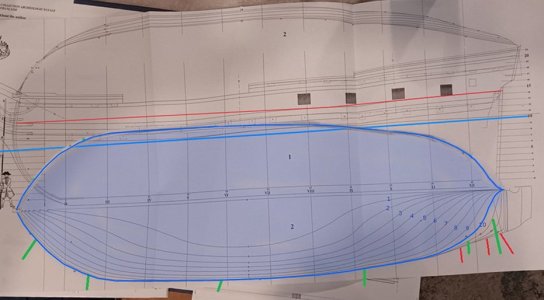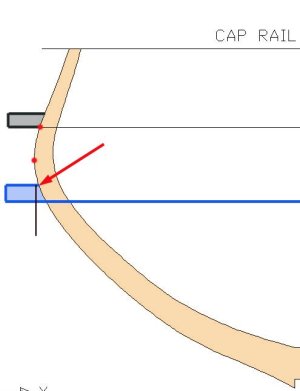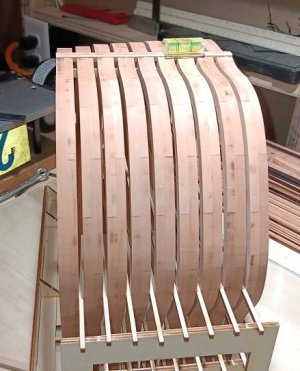I'm at the point where I'm getting ready to build a jig for raising the frames off the keel.
My question is:
Which waterline do I use to build the profile of the top level? See Photo for what I mean by the top level:
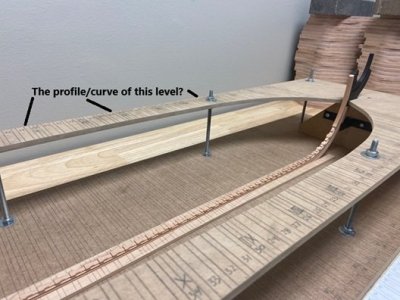
Below are the waterline plans of the Salamandre. My gut tells me to use a single waterline (i.e. the 10ft line marked in green) because it follows the max width/dead perpendicular line most of the way? Any feedback appreciated!
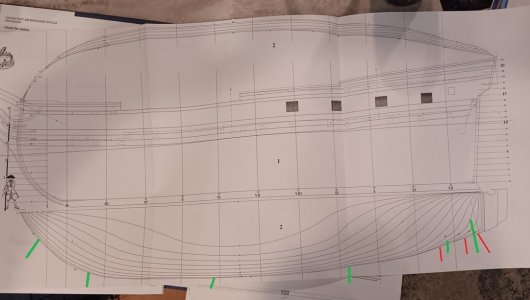
My question is:
Which waterline do I use to build the profile of the top level? See Photo for what I mean by the top level:

Below are the waterline plans of the Salamandre. My gut tells me to use a single waterline (i.e. the 10ft line marked in green) because it follows the max width/dead perpendicular line most of the way? Any feedback appreciated!




 .
.
